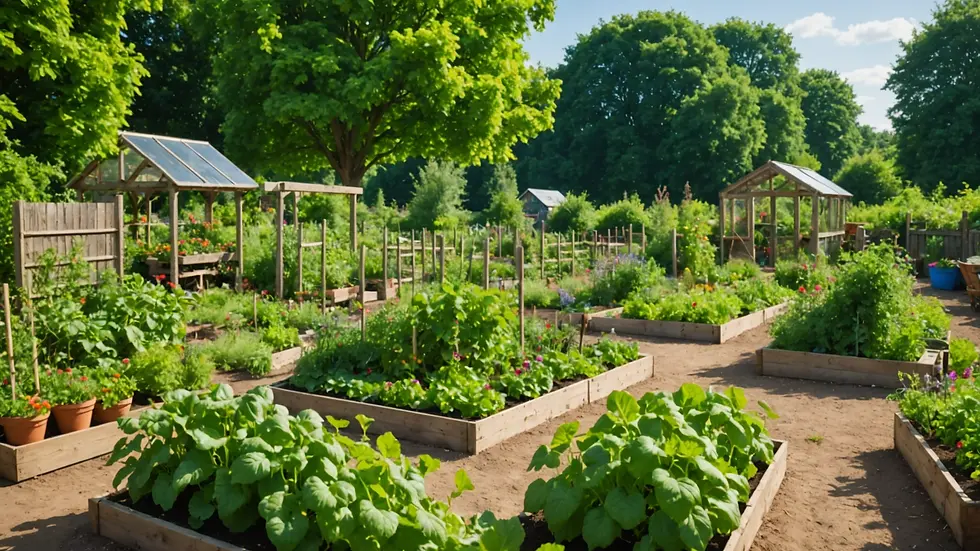Building a strong community goes beyond geography; it’s about forming relationships that unite us. Local partnerships bring people together, creating networks of support and collaboration that can turn neighborhoods into vibrant spaces. In this post, we will explore the importance of these partnerships and highlight practical steps you can take to get involved.
The Power of Local Partnerships
When we think about a community, we often envision neighborhoods filled with friendly faces and helpful neighbors. But what fuels that connection? The answer lies in local partnerships.
Local partnerships are collaborations between people, organizations, and businesses within a community. These partnerships utilize local resources and knowledge to tackle common challenges and enhance social cohesion. For example, a neighborhood group might team up with local schools to create after-school programs that keep kids engaged and safe. These partnerships not only support individuals but also create opportunities for collective growth and development.
Community groups, schools, non-profits, and local businesses can all contribute to building strong partnerships. When they come together, they add value by pooling their resources and skills.

Benefits of Building Community Through Partnerships
1. Enhanced Resources and Skills
Collaborative efforts can lead to an impressive sharing of resources. For instance, a local library partnering with nearby schools can create tutoring programs that serve hundreds of students each year, effectively addressing educational gaps. Libraries expand their outreach, while schools gain access to additional learning tools.
When a local artist teams up with community centers, they may offer weekly art workshops, allowing residents to explore their creativity. This collaboration not only enhances artistic skills but also fosters a sense of pride and achievement among participants.
2. Economic Development
Local partnerships have the potential to stimulate economic growth significantly. For instance, consider a farmer’s market organized by local growers. This initiative not only provides fresh produce but can also boost local businesses, keeping about 40% of the money spent in the community. Such collaborative efforts can enhance customer relationships and reinforce community bonds.
Additionally, when nonprofits, local government entities, and businesses collaborate, they can attract funding. According to the National Council of Nonprofits, organizations that partner are 35% more likely to secure grants. This funding can lead to job creation and enhanced social services that benefit everyone.
3. Strengthened Social Networks
Personal connections are vital for building strong communities. Local partnerships encourage individuals to meet others with similar interests and values. Events like neighborhood clean-up days or social gatherings organized through these partnerships can help break down barriers and cultivate friendships.
As people work together on community projects, they develop support networks that enhance social integration. Research shows that neighborhoods with strong social ties experience a 50% reduction in crime rates, illustrating the positive impact of these connections.
How to Get Involved
Now that we’ve highlighted the importance and benefits of local partnerships, you may wonder how to take action. Here are some ideas to consider:
1. Identify Your Interests and Skills
Reflect on what you care about. Are you passionate about education, the arts, the environment, or social justice? Understanding your interests will make it easier to find local groups or initiatives that resonate with you.
Think about the skills you can offer. Everyone has valuable experiences—event planning, teaching, or community organizing are just a few examples of how you can contribute.
2. Connect with Local Organizations
Start researching local nonprofits, community centers, or social clubs that align with your interests. Attend their meetings or volunteer events. This is an effective way to meet like-minded individuals and learn how organizations collaborate within the community.
3. Participate in Events
Get involved in community events designed for building partnerships, such as fairs, clean-up days, or festivals. These gatherings often serve as a hub for residents, businesses, and organizations, presenting a great opportunity to meet others and discover available resources.
4. Propose Ideas for Collaboration
If you have a specific project that could benefit the community, reach out to local organizations or businesses! Sharing your ideas might spark enthusiasm for collaboration, and many might provide resources or support to help you achieve those goals.
5. Stay Engaged
Community building is an ongoing effort. Once you’ve connected, stay active with the local partnerships you engage with. Regular participation in meetings, volunteering for new projects, and encouraging friends to join will deepen your ties and inspire others.

Your Role in Community Growth
Local partnerships are crucial for building resilient and dynamic communities. When we come together, we can create spaces that are welcoming, inclusive, and rich with opportunities for growth.
Whether you share your skills, attend local events, or support initiatives, getting involved is a rewarding way to help your community flourish. Take the first step today and witness how even small efforts can lead to impactful change.
Building community through local partnerships is not just about relationships; it’s about weaving a supportive network that benefits everyone. Together, we can make a difference!
Comments